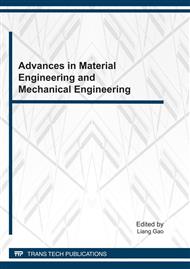p.83
p.88
p.93
p.99
p.103
p.108
p.114
p.120
p.126
Experimental Studies and Technology Process on Phosphor-Gypsum Decomposition for Producing Sulfuric Acid and Lime
Abstract:
Using phosphor-gypsum (PG) to produce sulfuric acid is one of the most effective ways of recycling sulfur resources. This paper studied the melting and decomposition behavior of PG with High Temperature Microscope and Infrared Sulfur Analyzer. Moreover, a new process of PG decomposition for producing sulfuric acid and lime is proposed and discussed. The result shows that the minimum communion point of PG is higher than 1200 °C, the desulphurization degree of PG at 1200 °C under reducing-oxidizing atmosphere can exceed 90%, and the decomposition products of PG have high hydration activity. This means that little liquid phase will occur if PG is decomposed at1200 °C, so PG can be decomposed using a fluidizing furnace. The new process of PG decomposition for producing sulfuric acid and lime has many advantages over the traditional process of PG decomposition for producing sulfuric acid and cement, and has a broad application prospects.
Info:
Periodical:
Pages:
103-107
Citation:
Online since:
July 2011
Authors:
Keywords:
Price:
Сopyright:
© 2011 Trans Tech Publications Ltd. All Rights Reserved
Share:
Citation:


